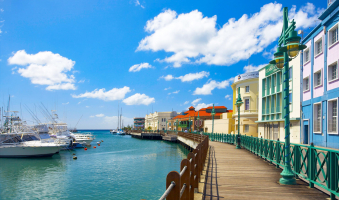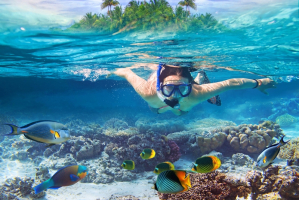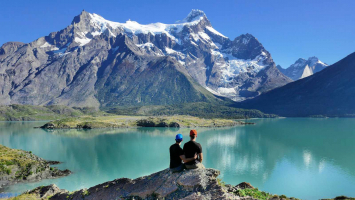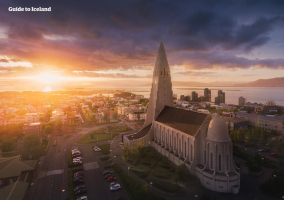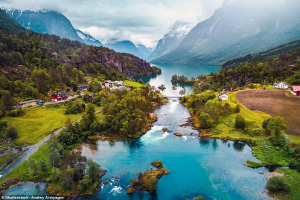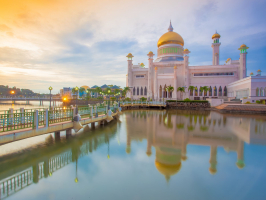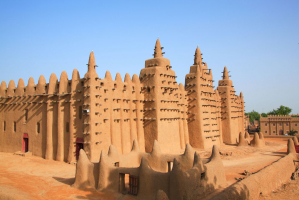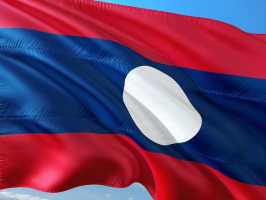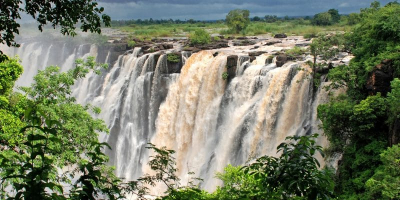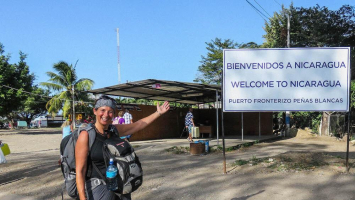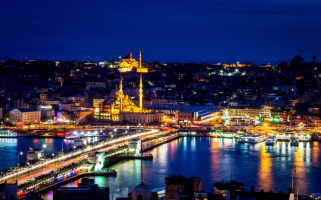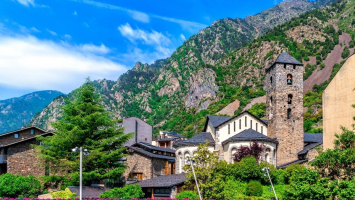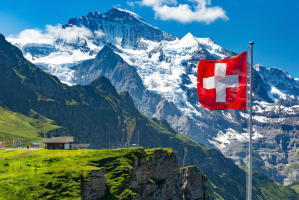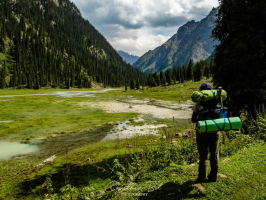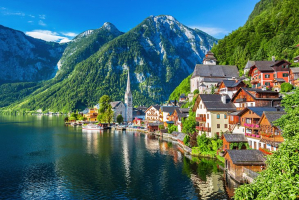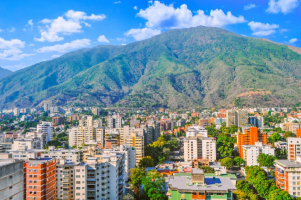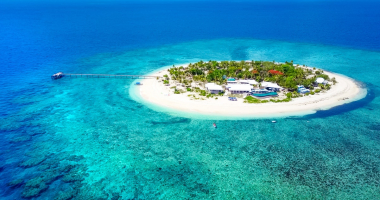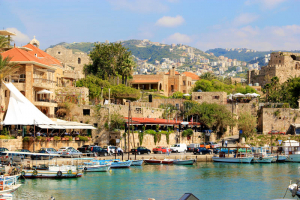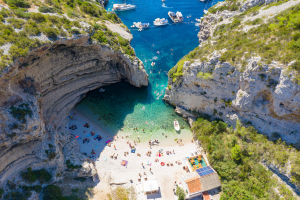Top 10 Things About Dominica You Should Know
Admit it: Dominica is probably not on your trip radar right now. You might not even know how to say it. However, this Caribbean island paradise is gaining ... read more...popularity due to its unspoiled woods, volcanic vistas, and great experiences. Even if you've heard of Dominica and can locate it on a map, these 9 things are sure to surprise you. You'll soon be unable to get it out of your head until you undertake the voyage yourself. If you are interested in this country, don’t forget to save the list of the things to know before traveling to Dominica that Toplist has compiled for you.
-
One interesting fact about Dominica is that Island Caribs, people from the Greater and Lesser Antilles, still live there. They were the island's earliest residents and are now known as the Kalinago people. Dominica was given the name Wait'tukubuli, which means "her body is tall." Approximately 3,000 people live on the island now, making it the region's biggest native population. The majority live in the Kalinago Territory, where you may see the model hamlet of Kalinago Barana Aute. Just keep it in mind to be courteous. Handmade goods will be available for purchase, and traditional festivals, rituals, and dances will be performed.
Several peoples now identify as Tanos or descendants of Tanos. Most notably, certain Puerto Ricans, Dominicans, and Cubans, both on the Caribbean islands and on the US mainland, identify with this group. However, whether Tano culture has genuinely persisted, or if it has progressively melded into a common cultural identity evolved from African, Spanish, and Tano cultures, but which can no longer be fully associated with the ancient Tano culture, is debatable.
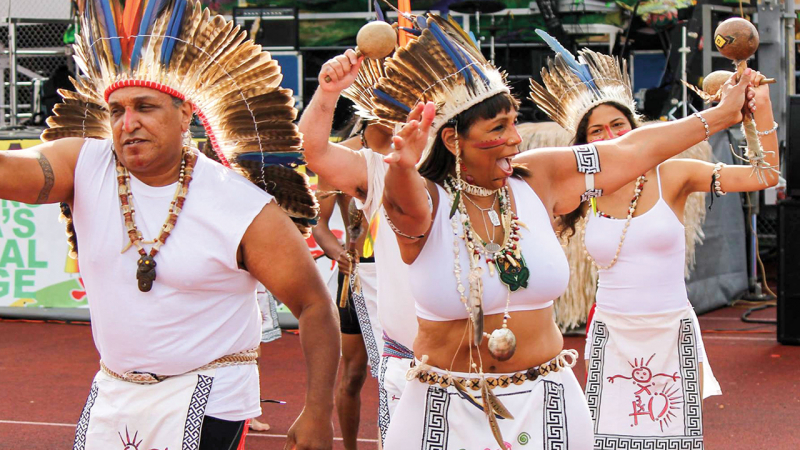
science.org 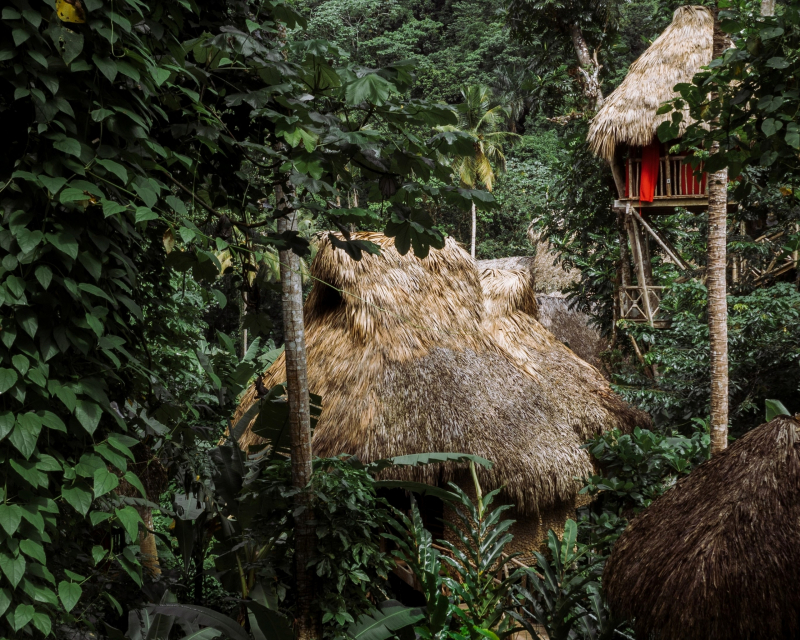
extremehotels.com -
Dominica possesses nine, yet there has been no major magmatic eruption since Columbus visited the island, resulting in the best and most extensively maintained tropical rainforests on the planet. The island's youngest dated volcanic deposits are connected with the Morne Patates dome on the sides of the huge active Plat Pays Volcano, which forms the island's southwestern extremity. This was a Pelean eruption (similar to Mt. Pelee's eruptions on Martinique in 1902 and 1929), and radiocarbon dates from the block and ash deposits indicate it happened around 500 years ago. In addition, two steam explosions (phreatic activity) occurred in the Valley of Desolation in 1880 and 1997. Today, the island is characterized by frequent earthquake swarms as well as robust and broad geothermal activity. In fact, it is the most concerning of all Caribbean volcanic sites, and there is a widespread belief that it (like Montserrat before 1995) is overdue for an eruption.
Nine! The view from Morne Diablotins, the tallest peak on the island and the second highest in the Lesser Antilles, is beautiful. It's a demanding but worthwhile six-hour journey into the jungle, where you'll encounter hundreds (thousands?) of different plant and animal species. The neighboring islands of Guadeloupe and Martinique may also be viewed from the summit of this volcano, which hasn't erupted in a long time and is completely safe.
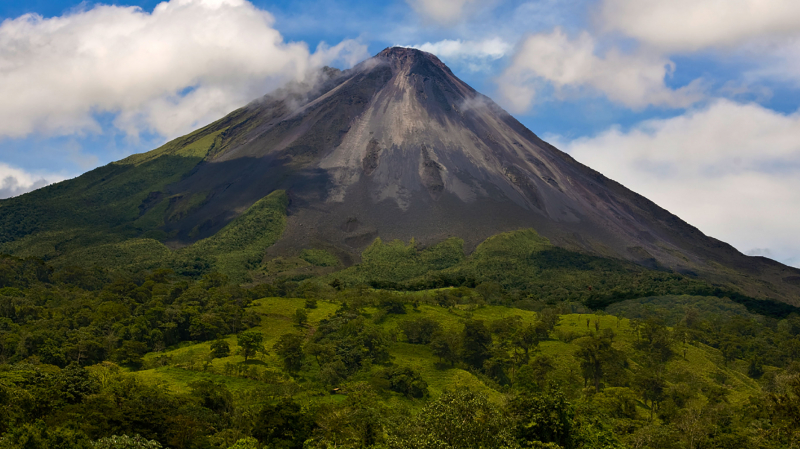
gadventures.com 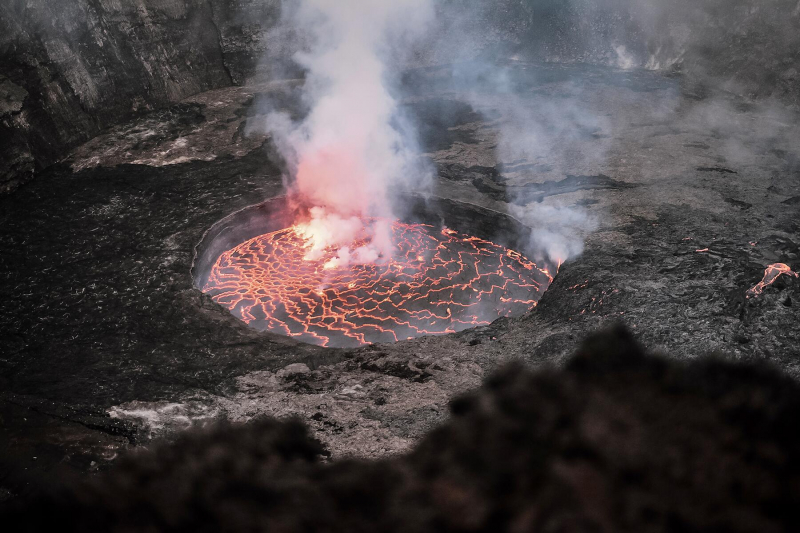
fodors.com -
Roseau is the capital and largest city of Dominica. The population is about 14,847 people. The geographical location is on the west coast of Dominica. This is a city with a combination of modern and colonial architecture (French architectural style). Roseau is also Dominica's most important trading port. It's definitely one of the things about Dominica you should know if you want to come to this island.
The majority of business life, which is very limited, is concentrated in Roseau, the capital city. Tropical woods and over 1,200 plant species cover about two-thirds of the island. Morne Trois Pitons National Park is one of the island's most important attractions and the first UNESCO World Heritage Site in the eastern Caribbean. The cultural mix on the island includes English, French, African, and Caribbean influences, and many restaurants and attractions reflect this "melting pot" of civilizations. Dominica, unlike other Caribbean islands, is not widely recognized for its beaches since most of the island's beaches are rather stony and lack shade. However, the black sands of Hampstead Beach remain a popular tourist attraction, and white-sand beaches may be found on the island's northeastern coast.
Because Dominica has so many volcanoes, many beaches naturally have black sand. Mero Beach is a popular one (albeit it's more of a silvery gray), with neighboring eateries all specialized in fresh cuisine and knock-you-down rum punch. Purple Turtle, Rosalie Bay, and Number One Beach are also worth a visit. Away from the seashore, visit the neighboring sulfur baths of small-town Wotten Waven. Look for Bongo Baths, Ti Kwen Glo Cho, and Tia's Hot Spa.
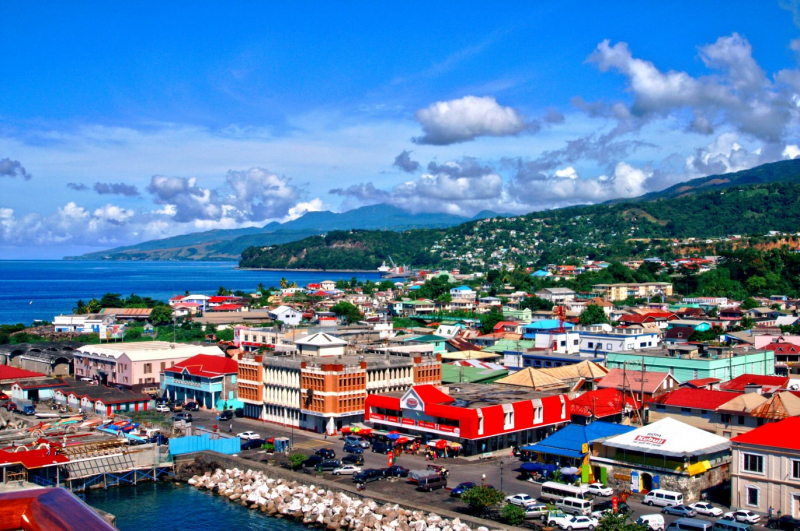
dinhcutoancau.com 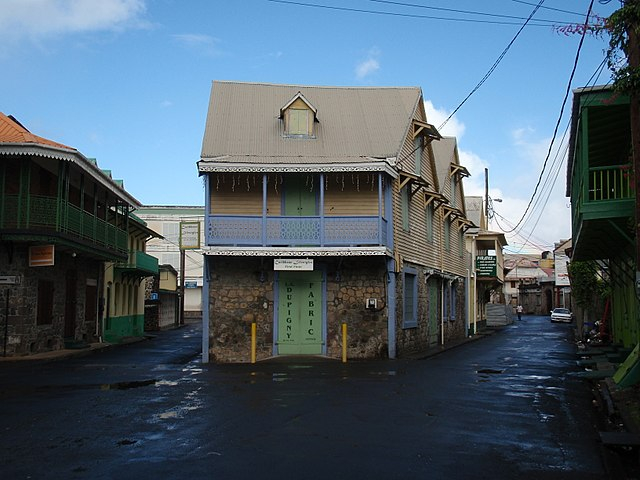
en.m.wikivoyage.org -
One of the most well-known attractions on the island is Boiling Lake. It was found in 1870 and is a flooded fumarole within a volcanic crater. Depending on the area's volcanic activity, the lake water changes hue. The eight-mile trek to get there takes you through the appropriately titled Valley of Desolation and some genuinely untamed nature. This is no easy walk; simply getting to the lake will take you four to six hours. Put on your walking boots and prepare to get messy.
Boiling Lake, the world's second-largest of its kind, is a flooded fumarole from a volcano in the Valley of Desolation – words that seem to depict life on another planet yet precisely convey what you'll find if you're brave enough. The lake, which is 200 feet broad and unknown in-depth, is surrounded by whirling clouds of mist and resembles a cauldron of rapidly seething greyish-blue water superheated by the molten lava beneath the surface of the surrounding rock. The spectacular sights that surround Boiling Lake rival its majesty, with clear views of the ocean, the neighboring island of Martinique, and ageless topography carved by erosive and volcanic forces of nature over 200 million years of its creation. The surrounding area is also home to some of the toughest organisms on the earth, including tiny lizards and a few bug species.
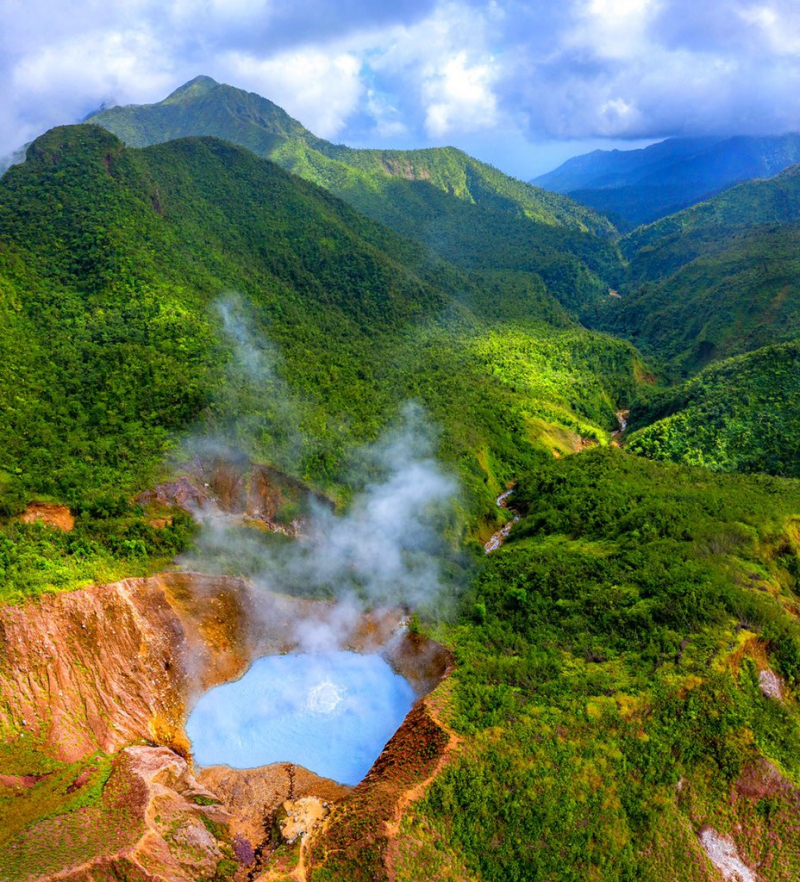
twitter.com 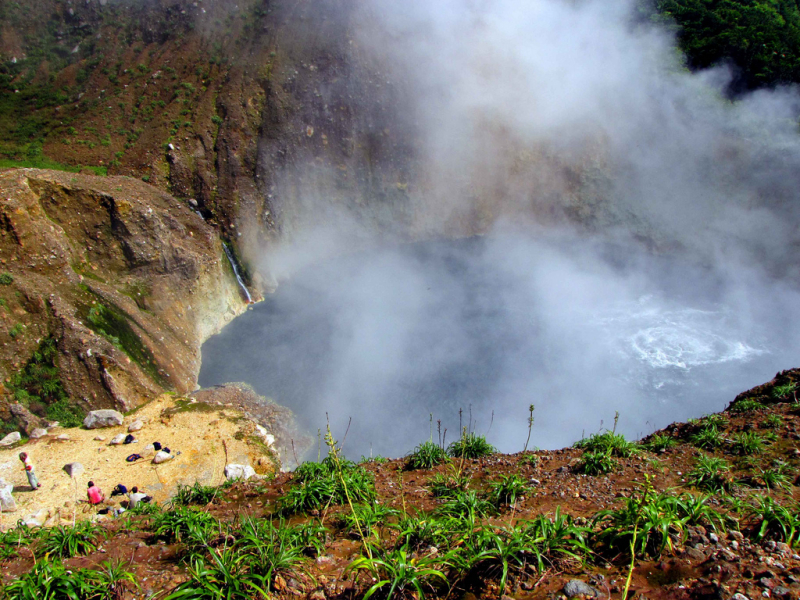
charismaticplanet.com -
Dominica contains just four amphibians, which is surprising given the island's biodiversity and fauna, and one of them is known as a crapaud (French for "toad"), gigantic ditch frog, or "mountain chicken." It's one of the world's largest, only found on Dominica and Montserrat, and is so famous that it's included on Dominica's official seal. Also, it tastes just like chicken. This was a popular meal on the island a few years ago. The frog population has plummeted as a result of its popularity. It's unlikely to be on any menu these days.
The "Mountain Chicken" or Crapaud is a big smooth-skinned frog native to Dominica and Monserrat, ranging in color from brown to grey depending on local ecology. The male is distinguished by a small black thumb claw that assists in mating. It was once widespread in the nearby French islands of Martinique and Guadeloupe, but because it is considered a delicacy, it has been hunted to extinction in recent years. There are three types of little tree frogs. Iguanas are common in coastal locations, where they spend most of their time in trees, where they sometimes go unnoticed due to their remarkable camouflage. The dominating elderly men become grey and black, with a frill under their chin. Tree lizards, also known as zandoli in the native language, are the most common sightings on the island. They may brighten or darken their hue (but not quickly) to fit their environment. Males are territorial and use a bright orange neck fan to scare opponents.
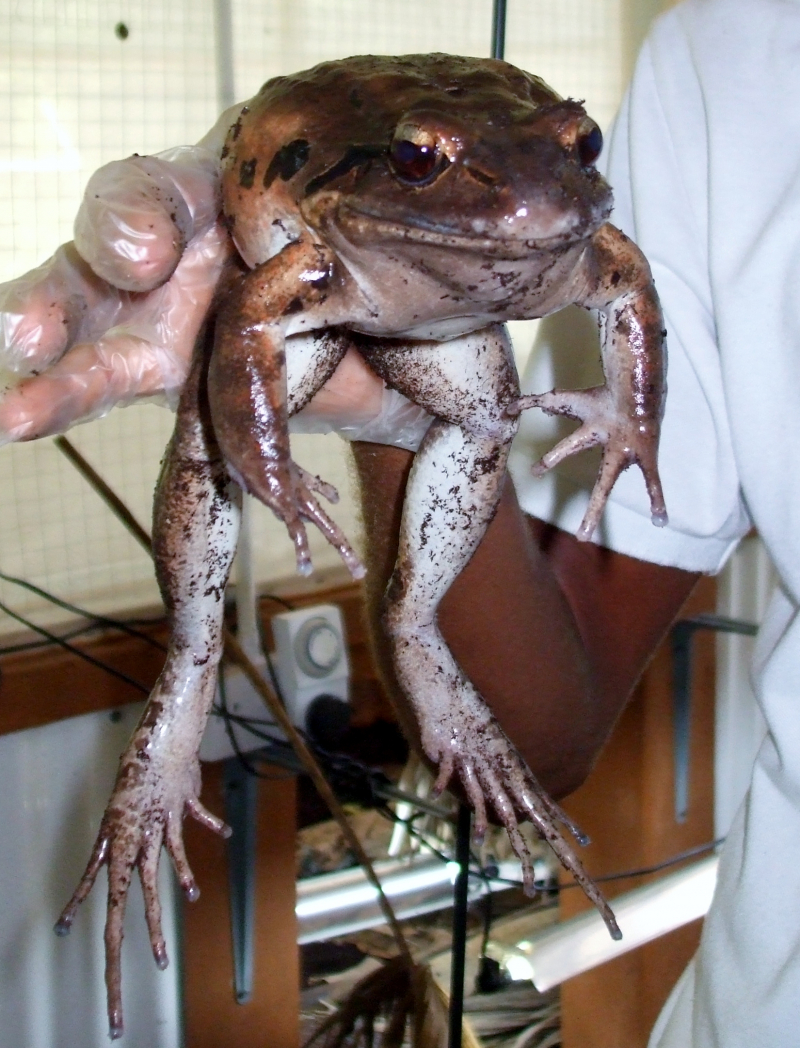
onhisowntrip.com 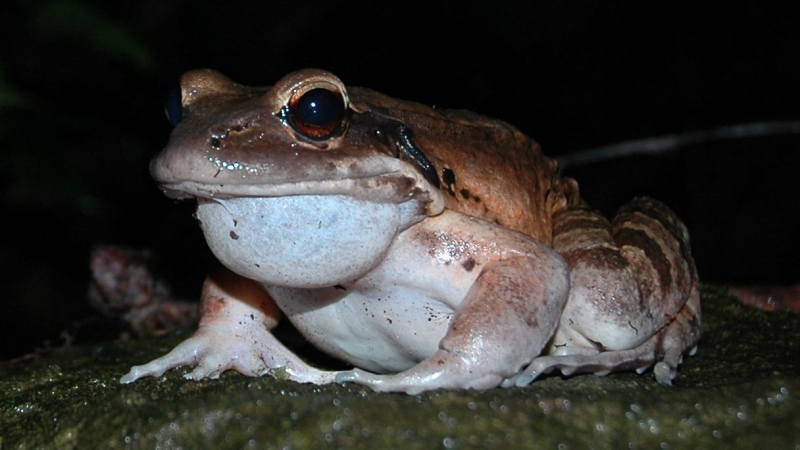
zsl.org -
Dominicans are happy to tell tourists that most of this film, as well as certain sequences from the series' third installment, At World's End, were shot on their island. The film's "Cannibal Island" is Dominica; the location where Will Turner and his shipmates are imprisoned in bone cages is Titou Gorge in Morne Trois Pitons National Park; the Indian River was renamed "Pantano River," and various towns served as backdrops for other sequences. If you want to get around Dominia, this is definitely one of the things about Dominica you should know.
The Pelegostos' original town - a completely hypothetical tribe, given there is no cannibalism in the Caribbean – was created at High Meadow, south of the island's capital of Roseau, along with a neighboring location overlooking the main road named Twin Peaks. The lengthy and rickety-looking rope bridge that connects one side of the town to the other was really supported by solid steel pilings. Titou Gorge, in the Morne Trois Pitons National Park, is the abyss in which Will Turner (Orlando Bloom) and his shipmates are hung in spherical cages made of bones. The park, which includes the Morne Trois Pitons volcano, is located in Dominica's south-central core. The Indian River, a stretch of shallow water running into the ocean near Portsmouth on Dominica's northeast coast, became the 'Pantano River,' which must be traversed to reach Tia Dalma's treehouse (Naomie Harris). Take a trip along the river, which is bordered by the gnarled roots of mangrove plants.
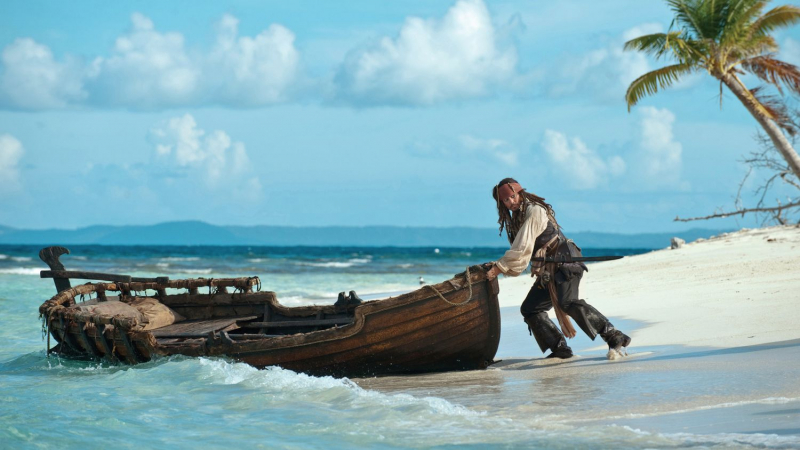
tripsavvy.com 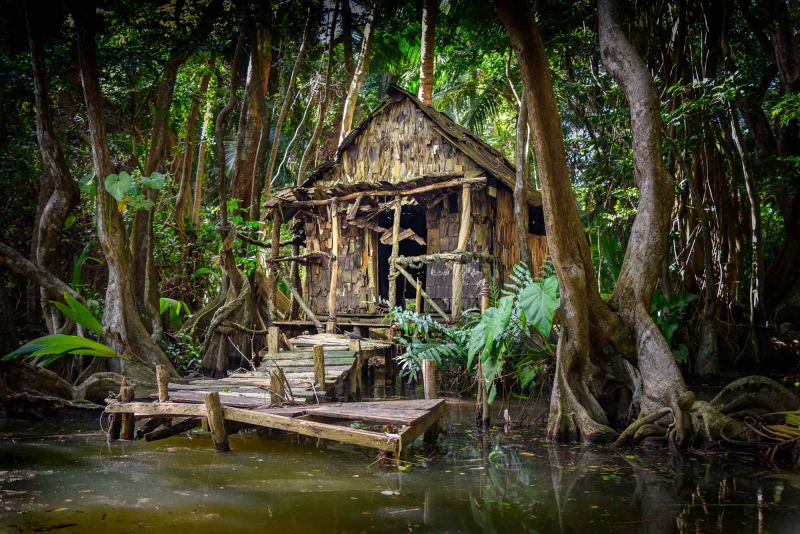
islands.com -
One of the things about Dominica you should know is natural. Dominica has so many rivers, mountains, and beaches that finding an extreme adventure isn't difficult. Follow the Layou River to the sea by river tubing or kayaking; snorkel through warm bubbles at Champagne Beach; canyon through the rainforest to a secret waterfall; hike the Waitukbuli National Trail, the Caribbean's longest; scuba dive around Scotts Head Pinnacle; or swim from the Caribbean to the Atlantic.
If you're not a fan of water, try hiking, horseback riding in Portsmouth, birding, or even turtle watching. You will not run out of options. You'll feel as though you've entered an underwater universe maintained particularly for you in the waters surrounding Dominica. That it was. Thriving coral gardens will take you to intriguing cliffs and pinnacles, all attributable to the island's historic volcanic activity. The walks in Dominica will take you to cascading waterfalls, steep gorges, gorgeous jungles, and even a boiling lake. The hiking activities on Nature Island are endless, with three national parks and hikes ranging from simple to challenging.
Dominica is a paradise for thrill-seekers! There are 300 kilometers of hiking and biking routes throughout the nation. Dominica has so many rivers, mountains, and beaches that finding an extreme adventure isn't difficult.
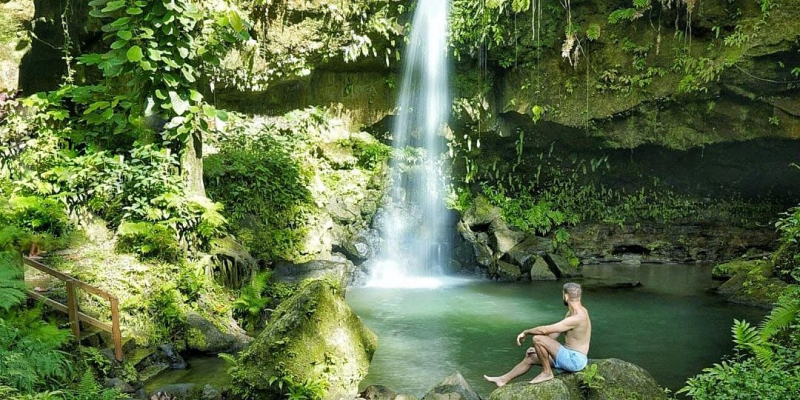
onhisowntrip.com 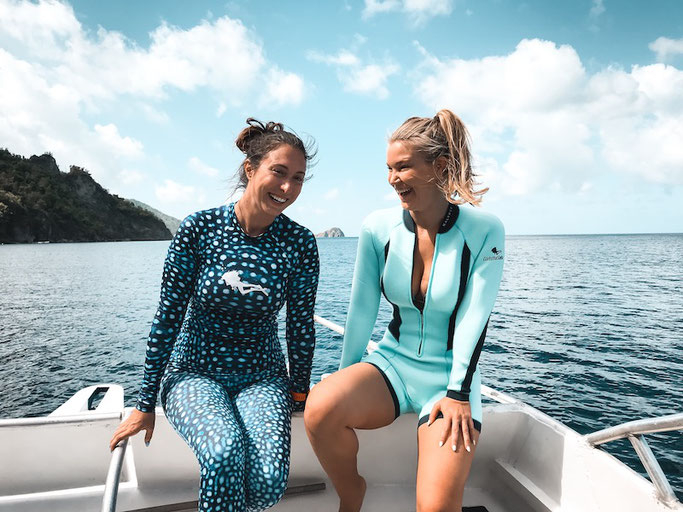
girlsthatscuba.com -
Dominica is the only place in the world where the sperm whale may be seen all year. However, sightings are most prevalent between November and March. A short boat journey puts you into contact with the world's biggest toothed mammal in the calm blue Caribbean Sea. Boaters and fishermen have reported spotting the sperm whale near Scotts Head, Roseau, Layou, and Point Round. Whale watching operators adhere to stringent norms of conduct, minimizing any disruption and never "luring" the whales. Even if the whales are elusive, you will almost certainly see the acrobatics of hundreds of spotted and spinner dolphins.
Sperm whales pick Dominica's seas as their sole year-round habitat, so the chances of seeing one on any trip — whenever, anywhere — are fairly strong. Dolphins and whales reside quite near to shore regardless of the weather. However, the ideal season is November through March. Choose a qualified guide—they're practically whale whisperers. This is a once-in-a-lifetime opportunity, and to be clear, Dominica is the only place on the globe where sperm whales may be found all year. That is an unexpected fact!
You can reserve a room at the Balaji Palace in Playa Grande. There's a private beach in a fantastic location for magnificent sunsets, and if you're feeling energetic, a variety of sports such as whale watching, sea fishing, horseback riding, and golf will keep you occupied. Whale watching is one of the things about Dominica you should know and experience.
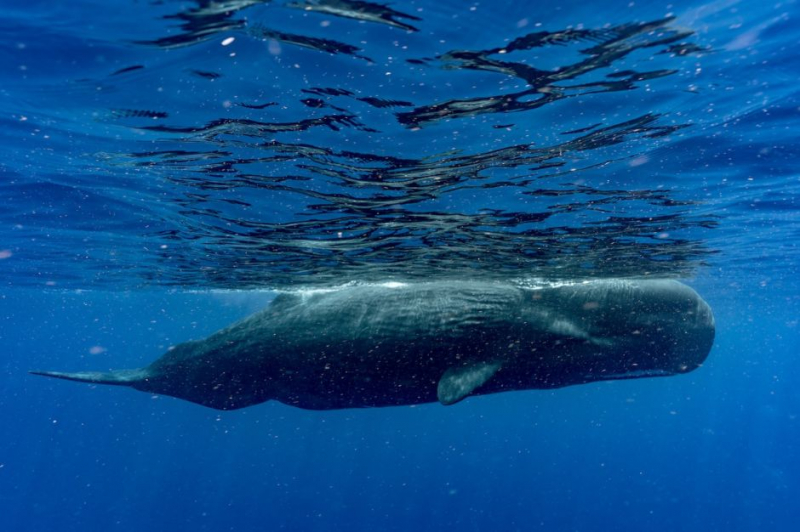
matadornetwork.com 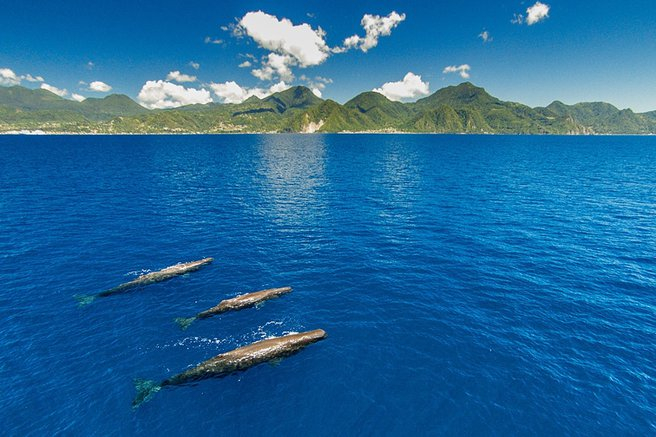
discoverdominica.com -
The good news is that citizens of 108 countries and passport-issuing authorities can enter Dominica as tourists without a visa for up to 30 days. The United Kingdom, the United States, Canada, Mexico, Australia, Japan, and the European Union are among the nations that do not require a visa (EU). The Dominican Republic's Ministry of External Relations website contains a comprehensive list, including information on the visa periods given to various nations. A passport with two blank pages is required for entry into Dominica.
Your passport must also be valid for at least six months beyond the end of your visit. Once in Dominica, travellers must get a tourist card; prior to 2018, this card cost $10 USD at the airport, but the amount is now frequently included in the price of the ticket. There is also a $20 USD exit tax imposed by Dominican law, which should be included in your airfare. To minimize surprises on arrival or departure, confirm with your carrier that both costs have been included. You can visit Dominica without a visa if you are a legal resident of, or have a valid visa for, the United States, the United Kingdom, Canada, or the Schengen region.
Visitors who do not come from a visa-exempt nation must apply for a visa at the nearest Dominica embassy (which may be in a neighboring country). Visa prices vary based on the kind of visa, the duration of stay, and the nation where you apply; a single-entry visa can cost up to US $95 USD (not including service fees).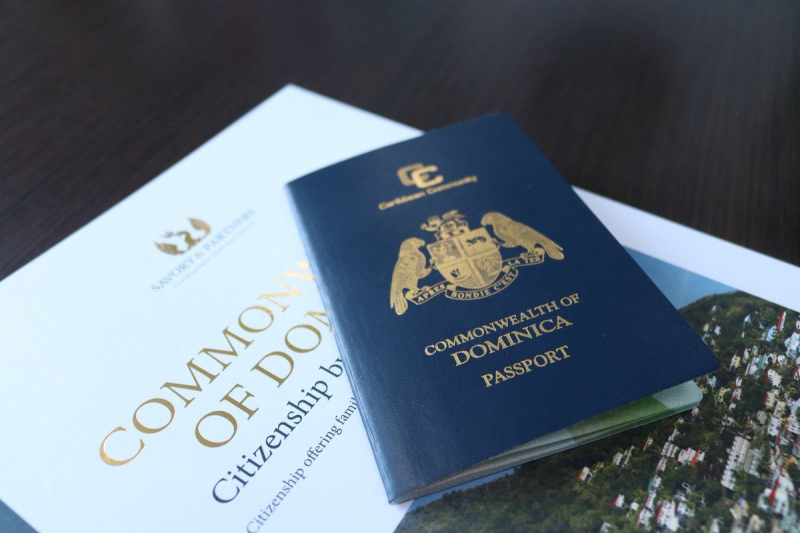
vietnamimmigration.com -
In terms of restaurants, Roseau (Dominica's capital and largest city) is your best choice, where you can enjoy inexpensive Caribbean food as well as some basic European fare. Many of the greatest places to dine in Roseau are small, unassuming establishments. The downtown market sells fresh caught seafood, such as conch, a sort of snail that is popular in Dominican cuisine. Among the other highlights are tee-tee-ree (little fish cakes) and crab backs, as well as pumpkin soup, fried plantains, and goat water, a rich stew prepared from goat flesh.
Roseau's Kozy's Niche is a tourist favorite. Diners compliment the restaurant's superb service and its combination of Italian and Caribbean cuisine. Recent guests recommend lionfish and grilled mahimahi as must-tries. Visitors to the famed Trafalgar Falls should stop at the Papillote Rainforest Restaurant. While the meal at this restaurant largely consists of seafood (and earns wonderful ratings), the major reason to visit this particular establishment is its ambience. Visitors may eat in a genuine rainforest, where the distinction between the Papillote Rainforest Restaurant's unique appearance and its pleasant interior is easily overlooked. If you're only looking for a drink or a small dish, go to Roseau's Ruins Rock Cafe. According to previous guests, it boasts the best rum on the island. A selection of fruit drinks are also available at the cafe. Although Dominicans expect visitors to dress casually, you may wish to avoid wearing jeans, shorts, or sandals to dinner.
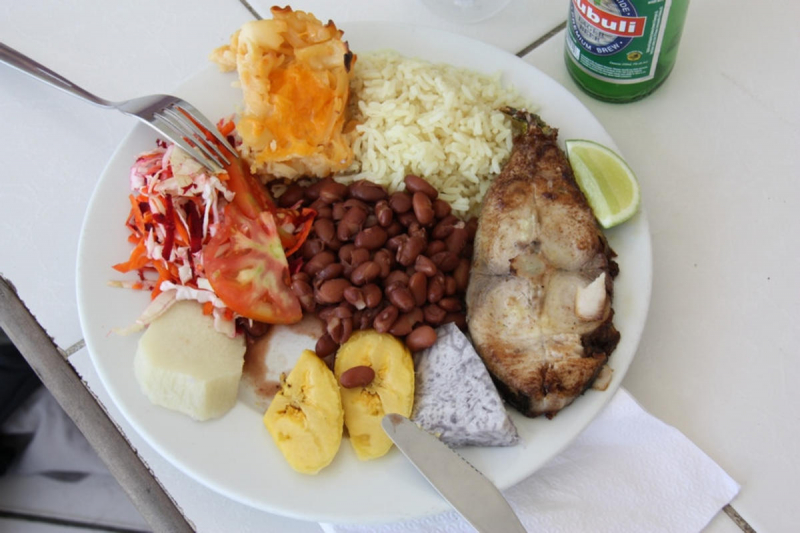
iexplore.com 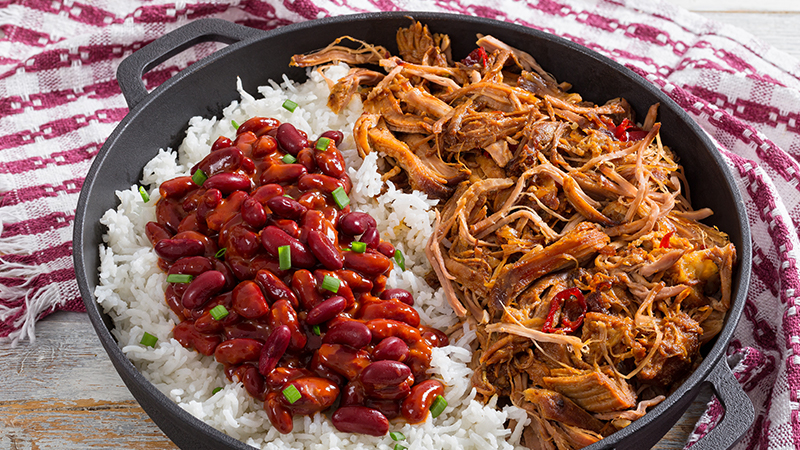
flightcentre.ca












